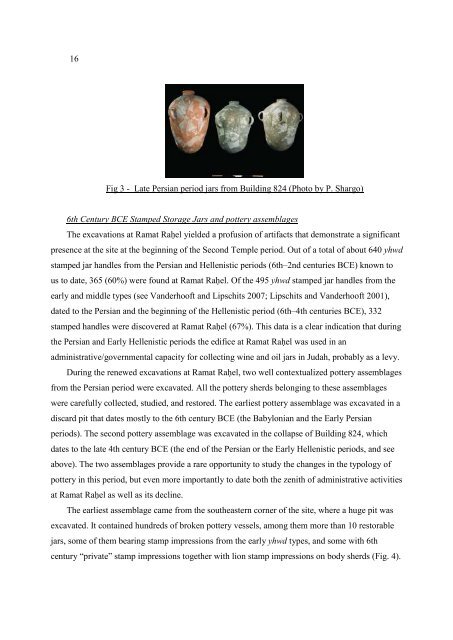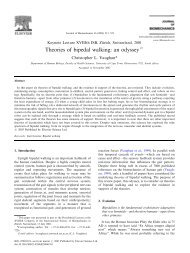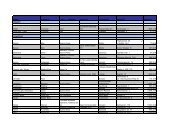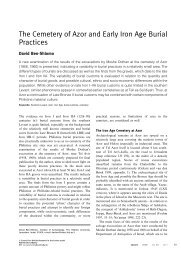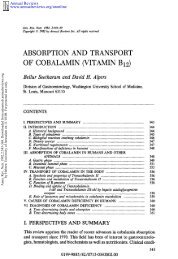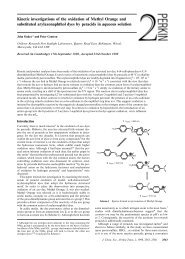The Riddle of Ramat Raḥel: The Archaeology of a Royal Persian ...
The Riddle of Ramat Raḥel: The Archaeology of a Royal Persian ...
The Riddle of Ramat Raḥel: The Archaeology of a Royal Persian ...
You also want an ePaper? Increase the reach of your titles
YUMPU automatically turns print PDFs into web optimized ePapers that Google loves.
16Fig 3 - Late <strong>Persian</strong> period jars from Building 824 (Photo by P. Shargo)6th Century BCE Stamped Storage Jars and pottery assemblages<strong>The</strong> excavations at <strong>Ramat</strong> <strong>Raḥel</strong> yielded a pr<strong>of</strong>usion <strong>of</strong> artifacts that demonstrate a significantpresence at the site at the beginning <strong>of</strong> the Second Temple period. Out <strong>of</strong> a total <strong>of</strong> about 640 yhwdstamped jar handles from the <strong>Persian</strong> and Hellenistic periods (6th–2nd centuries BCE) known tous to date, 365 (60%) were found at <strong>Ramat</strong> <strong>Raḥel</strong>. Of the 495 yhwd stamped jar handles from theearly and middle types (see Vanderho<strong>of</strong>t and Lipschits 2007; Lipschits and Vanderho<strong>of</strong>t 2001),dated to the <strong>Persian</strong> and the beginning <strong>of</strong> the Hellenistic period (6th–4th centuries BCE), 332stamped handles were discovered at <strong>Ramat</strong> <strong>Raḥel</strong> (67%). This data is a clear indication that duringthe <strong>Persian</strong> and Early Hellenistic periods the edifice at <strong>Ramat</strong> <strong>Raḥel</strong> was used in anadministrative/governmental capacity for collecting wine and oil jars in Judah, probably as a levy.During the renewed excavations at <strong>Ramat</strong> <strong>Raḥel</strong>, two well contextualized pottery assemblagesfrom the <strong>Persian</strong> period were excavated. All the pottery sherds belonging to these assemblageswere carefully collected, studied, and restored. <strong>The</strong> earliest pottery assemblage was excavated in adiscard pit that dates mostly to the 6th century BCE (the Babylonian and the Early <strong>Persian</strong>periods). <strong>The</strong> second pottery assemblage was excavated in the collapse <strong>of</strong> Building 824, whichdates to the late 4th century BCE (the end <strong>of</strong> the <strong>Persian</strong> or the Early Hellenistic periods, and seeabove). <strong>The</strong> two assemblages provide a rare opportunity to study the changes in the typology <strong>of</strong>pottery in this period, but even more importantly to date both the zenith <strong>of</strong> administrative activitiesat <strong>Ramat</strong> <strong>Raḥel</strong> as well as its decline.<strong>The</strong> earliest assemblage came from the southeastern corner <strong>of</strong> the site, where a huge pit wasexcavated. It contained hundreds <strong>of</strong> broken pottery vessels, among them more than 10 restorablejars, some <strong>of</strong> them bearing stamp impressions from the early yhwd types, and some with 6thcentury “private” stamp impressions together with lion stamp impressions on body sherds (Fig. 4).


